





Editor-in-Chief
Rosalia Bautista, Vice-President (Education)
Designed By
Nicole Liu
Special Thanks
Nipun Kar, UTS LSS President
Kyarah Bouchahine, Education Engagement Director
Matthew Ham, Education Engagement Director
Peer Mentors 2025
Zachary Boswell
Sophie Brady
Ahmad Hamad
Soumyashree Murali
Claire Ng
Annabella Poll
Samara Talintyre
Chantelle Truong
The Education Guide is published by the UTS Law Students’ Society. 61 Broadway, Ultimo NSW 2007 UTS Central, Level 14, Room 104
Ph (02) 9514 3448
Fax (02) 9514 3427
www.utsl SS .com
The UTS LSS acknowledges the Gadigal People of the Eora Nation, the Boorooberongal people of the Dharug Nation, the Bidiagal people and the Gamaygal people upon whose ancestral lands our university stands. We would also like to pay respect to the Elders both past and present, acknowledging them as the traditional custodians of knowledge for these lands.
Unle SS provided by the designers or commi SS ioned specifically for the purpose of this publication, uncredited photographs have been sourced from royalty-free distributors, licensed under Creative Commons Zero.
All expre SS ions of opinion published in The Full Bench are not the official opinion of the UTS Law Students’ Society unle SS expre SS ly stated. The UTS Law Students’ Society accepts no responsibility for the accuracy of any opinions or information contained herein and readers should rely on their own enquiries to make decisions in their own interest.
This publication is copyright. Except where permitted under the Copyright Act, no part of this publication may form or by any means (electronic or otherwise) be reproduced, stored in a retrieval system or transmitted by any proce SS without specific written consent of the UTS Law Students’ Society. Enquiries are to be addre SS ed to the publishers.


Welcome to the first-ever Education Guide!
This publication is yet another significant achievement for our society as we continue to strengthen our commitment to supporting every student in their law school journey.
The purpose of this guide is to ensure that all students have access to a resource that addresses the challenges and opportunities of legal education. The publication provides an overview of all the resources UTS has to offer, guidance on key subjects, and practical insights into navigating legal studies.
I want to thank our Education Portfolio, led by Vice-President (Education) Rosalia Bautista, as well as each of the Directors involved, for their hard work. I also acknowledge the valuable contributions of the 2025 UTS LSS Peer Mentors, who all contributed articles to form much of the content and were instrumental in bringing this publication to life.
As the first ever edition of a publication of this kind, the time and effort dedicated by each contributor to build this Guide did not go unnoticed. I would also like to express our gratitude to the sponsor for this guide, Gilbert + Tobin. A noteworthy mention also to the UTS Faculty of Law for their support! The confidence in our society and unwavering support is truly appreciated!
On behalf of the UTS Law Students’ Society, I am truly excited to present the UTS LSS Gilbert + Tobin Education Guide. I hope you find it useful!
Nipun Kar


Welcome to the first UTS LSS Gilbert + Tobin Education Guide!
The Education Guide is a publication which aims to make information on how to navigate a law degree more accessible to students. Going into a law degree, something which I’ve found invaluable has been listening to and adapting advice from other students, especially those who completed subjects and conquered academic milestones before me. This is something which I hoped to make more widely accessible to the law student community, as well as promoting an awareness of the academic assistance offered through the UTS Law Students’ Society and University of Technology Sydney. For this reason, this guide covers all things from subjects to advice on how to tackle course content. Whether you’re in first-year or penultimate year, there’s a resource in here which could be helpful to you!
Of course, with the publication being the first that the UTS Law Students’ Society has ever produced, there are many people I’d like to thank. Firstly to my Education Subcommittee, who have edited submissions and provided their own contributions to the guide, your support is highly appreciated. Next, to the Peer Mentors for their contributions on approaching academic habits, your advice will help streamline the academic tips available to students, and I’d like to thank each and every one of you for the transparency you provide with your advice. Lastly, I’d like to thank UTS LSS President, Nipun Kar for supporting this vision and the Education Portfolio throughout his tenure.
I wish you all happy reading and encourage you to use the resources in the guide. If there are any questions about any other resources offered during your degree, please feel free to address them to vpe@utslss.com.







Foundations of law provides an introduction into the Australian legal system in the first year. This subject covers an introduction to the governing systems of law including the separation of powers, principles of judicial decisionmaking, and a study of critical legal perspectives allowing students to gain perspective on the experiences of different groups and individuals under the law.

Format

Students are required to attend two seminars a week where students participate in discussions and group exercises based on their readings and preparation activities.
Assessment
• Class Participation (20%)
• Case note (40%)
• Statutory interpretation and research task (40%)
Overview

Ethics Law and Justice is a foundational subject in the UTS Law program that encourages students to grapple with the ethical dimensions of legal practice and the justice system more broadly. Rather than focusing purely on black-letter law, this subject asks students to interrogate how law operates within social, moral, and political contexts. This subject explores the importance of legal ethics in shaping both the legal profession and the justice system. Students examine access to justice, ongoing reforms, and the ethical responsibilities of legal practitioners.
Students will explore barriers to accessing justice and current reforms aimed at addressing them, while also learning about the professional conduct rules governing lawyers and how to apply ethical frameworks in legal decision-making.
Format
One seminar a week focusing on exercises, peerreviewed and discussion based activities. public speaking skills, with both peer and tutor feedback.
Assessment
Criminal Law and Procedure is one of the first subjects where law starts to feel less like theory and more like something you’d see play out in real life. You’ll delve into how the criminal justice system works in NSW, including what constitutes a crime, how people are charged and what happens next. It’s a core requirement for anyone aiming to practice law in Australia and a great introduction to legal problem-solving. At the heart of it all is figuring out how someone becomes criminally responsible. You’ll learn about the two key ingredients: the actus reus (the act) and the mens rea ( their intention behind the act). Whether it’s a punch, a theft, or something more serious, you’ll break down real and hypothetical cases to work out what the law says and where defences like self-defence or mental illness might come into play. You’ll also get into how police powers work, how people are charged and what the prosecution process looks like from start to finish.
• Essay (30%)
• Class participation and group assignment (30%)
• Final exam (40%)
Format
Two tutorials a week focused on answering discussion questions and problem sets.
Assessment
• Mid-semester problem-solving based assignment (40%)
• Class participation (20%)
• Final exam (40%)
Torts is a core subject for law students at UTS that introduces you to key legal principles governing civil wrongs. This subject explores the legal principles that allow individuals to seek compensation when they’ve been injured, trespassed against, or otherwise civilly ‘wronged’ by others. The subject covers fundamental topics such as trespass to the person, trespass to land, negligence and nuisance through key cases and statutes. Negligence is covered in the most depth throughout this subject, including key components such as the duty of care, breaches of duty, and defences to negligence. The twice-weekly classes are highly interactive and discussion-based and allow students to develop their capacity to apply the law of torts to increasingly complex problems.
Students can expect to spend a lot of time unpacking and analysing case law and how principles of tort law have evolved with societal changes. You’ll also dive into the Civil Liability Act 2002 (NSW), introduced as part of sweeping reforms in the early 2000s, and learn how this legislation intersects with and reshapes the common law.
Contracts (70211) is a foundational subject that introduces students to the core principles of contract law. It examines how contracts are formed, interpreted, and enforced, with a focus on the legal obligations that arise when people and businesses make binding promises. Students will engage with essential concepts such as agreement, consideration, intention, capacity, privity, and the formal requirements for a valid contract. The subject also explores the rights and obligations of parties to a contract and how the law addresses factors that may affect the validity of a contract, such as misrepresentation, duress, undue influence, and unconscionable conduct.
Format
Online lectures and one tutorial a week, designed to encourage discussion, problem-solving, and the practical application of legal doctrine.
Overview


Australian Constitutional Law is a core upper-level subject that delves into the legal and political architecture of the Australian state. This subject provides a strong foundation in Australian Constitutional Law, focusing on the Commonwealth Constitution’s role in shaping the legal system. You’ll explore federalism, State constitutional principles, and the distribution of powers between the Commonwealth and States. Key topics include legislative, executive, and judicial powers, as well as express and implied constitutional rights. Through case analysis and interpretative methods used by the High Court, you’ll develop skills to research, analyse, and apply constitutional principles—critical for both legal practice and understanding the broader legal framework.
Two seminars per week where you’ll work through key concepts and legal problems where tort law can be applied, whether it is a patient, a pedestrian or even a disgruntled neighbour, and be challenged to identify how the legal elements are made out.
The assessments for this subject are a mix of a written problem-solving task (30%) where you advise on liability and defences, class participation (20%) and a final exam (40%) designed to test your ability to apply your newfound legal knowledge to complex problem scenarios. The focus of this subject is not simply to teach you the rules of law, but also how to reason and think like a lawyer. It is foundational for so many other subjects and will change the way you adapt and analyse complex legal scenarios.
• Online quizzes (15%) which are typically designed to reinforce foundational concepts and provide practice in legal reasoning
• Problem-solving exercise (35%) allows students to explore a contractual issue or case in greater depth, demonstrating their ability to research, analyse, and present legal arguments in written form.
• The final examination (50%)
One lecture per week which introduces the course content for the following tutorial. Tutorials take place once a week which is where students discuss and refine their understanding of key cases, practice answering problem scenarios and complete their on-call assessment.
• Class participation (10%) comprised of an “on-call” participation class (5%) and ongoing class participation (5%)
• Essay (40%)
• Final examination (50%)

The course content covers case management, court processes and practices of and the role of lawyers in the Supreme Court of New South Wales, access to justice with broad coverage, encompassing Indigenous Peoples and Western civil practice, as well as the role of technology in the courts and access to the law, and different approaches to the resolution of disputes. The key pieces of legislation students study are the Civil Procedure Act 2005 (NSW) and the Uniform Civil Procedure Rules 2005 (NSW).
The course follows a lecture-tutorial structure. The first lecture, presented in week one, gives an overview of the course. The subject’s substantive content and tutorial classes commence in week two. All lectures are recorded. During the weekly tutorial classes, students will participate in various activities, requiring collaborative problem-solving and discussions either as a whole class or in small groups. These activities may take the form of mock negotiations, quizzes, advising on hypothetical legal scenarios and drafting documents. Students can expect to receive immediate feedback during your tutorial class. Further, the course includes components targeted at developing students’ research and academic writing skills. The feedback provided for these components focuses on your problem-solving strategies and modes of expression.
Assessment
• Essay (40%)
• Class participation through two “on-call” tutorials (15%)
• Final exam (45%)
Students will develop an understanding of what personal property is and the legal rights that develop from different types of transactions involving various types of property. The course covers four main topics: the rights that stem from transactions of personal property in a general sense; the sale of personal property; protections for consumers; and provisions surrounding finance produced by personal property.
Evidence (70109) is a 6-credit point subject that examines the rules for admissibility and use of evidence in court proceedings. Central to your studies, students will consider interpretations of the Evidence Act 1995 (NSW and Commonwealth) in judicial decisions and different types of evidence and how to apply these in establishing facts.
The course follows a lecture-tutorial structure. Live lectures will be delivered on campus at a scheduled time. Following the live lecture, an audio recording and the relevant lecture material will be accessible to students. Students will collaboratively work as a whole class to interpret and analyse legislation and cases, and in small groups to identify and apply the standards of admissibility to the practice problems. Students can expect to receive formative feedback during the tutorials.
• Assessment
• Quizzes (10%)
• Essay (40%)
• Final exam (50%)
Students will gain the relevant knowledge from prescribed readings, podcasts and vodcasts. In the seminar-based class structure (which includes a lecture and class discussion), students will have the weekly opportunity of practicing to apply the relevant legal concepts. Seminar activities will also help students to develop their statutory interpretation skills as the subject deals with major legislation.
• Weekly quizzes (10%)
• Advice (40%)
• Final exam (50%)


Overview
Administrative Law (70617) is a core subject that explores how government power is exercised, regulated, and kept in check through legal and institutional frameworks. It focuses on the accountability of public decision-makers and the rights of individuals affected by those decisions. Students study the roles of tribunals, ombudsmen, integrity commissions, and judicial review processes in ensuring that administrative actions remain lawful, rational, and fair. The subject examines both statutory and common law controls over decisionmaking and teaches students how legal doctrines shape public administration in Australia.
One tutorial per week with lectures. The lectures are designed to introduce course content with the tutorials providing a forum to discuss them.
Assessment
• Written assignment (40%)
• Class participation (15%)
• Final exam (45%)

Overview
Throughout the undergraduate law subjects students gain an understanding of public and international law, a rapidly developing body of law with a focus on global challenges. In doing so students develop an understanding of Australia’s position in relation to other nations. The course explores the scope of the international legal system through exploring various sources of the international legal system in relation to domestic law. Alongside jurisdiction and immunity from jurisdiction,treaties, state responsibilities and the settlement of disputes using the force of the United Nations. In order to apply principles of international law into contemporary global concern.

Real property is all about land. You’ll be learning about who owns it, how it’s bought and sold, and what legal rights people can have over it. It might sound very dry at first, but it’s quite an important subject, especially if you’re interested in areas like property, commercial or family law later on.
In this subject, you’ll learn how land law works in New South Wales, especially under the Torrens Title system, which is the system used to register most land in the state. You’ll look at concepts like ownership, interests in land and what happens when different people have competing rights over the same property. You’ll also start to see how property law links with other areas like contract law, equity, and trusts, which means this subject helps connect the dots between topics you’ll study throughout your degree. A big part of the subject involves solving practical problems, so you won’t just be memorising rules, you’ll learn how to spot legal issues and apply the law to real-life scenarios.

Format
In this course students can expect weekly one hour lectures in union with two hours of Tutorials. The classes have a collaborative structure in order to develop students’ verbal analyses of international law.
Assessment
• Group assignment (20%)
• Essay (20%)
• Class participation (10%)
• Final exam (50%)
Online lectures and tutorials. Tutorials will discuss the answers to the pre-preparation question as well as the discussion questions.
Assessment
• Two online multiple choice quizzes (both worth 10%)
• Pre-preparation problem scenarios (30%)
• Final exam (50%)

From global corporate giants to small business startups, this subject introduces students to the expansive world of Australian corporate law. Corporate Law equips you with the legal knowledge and understanding of how corporations are formed, run and regulated under Australian law, which undoubtedly builds the necessary skills for commercial legal practice. This subject teaches you not just what companies are, but how they work and how the law controls the power, risk, and responsibilities that come with operating through a corporate structure. You’ll consider the various actors involved in corporations, such as shareholders, directors, creditors, regulators and the public, examining how power is exercised, duties are enforced, and companies are held accountable under the Corporations Act 2001 (Cth).

The subject introduces students to core equitable doctrines such as fiduciary obligations, estoppel, undue influence, unconscionable conduct, and equitable remedies. A major focus is placed on the law of trusts, examining the creation and operation of express, resulting, constructive, and charitable trusts. The course also considers the duties and responsibilities of trustees, the rights of beneficiaries, and the consequences of breach of trust or fiduciary duty.
Weekly tutorials which focus on discussion questions and problem scenarios and lectures.
• Online quizzes (10%)
• Written assignment (40%)
• Final exam (50%)
In weekly tutorials, you should expect to engage in interactive class discussions that cover both practical problem solving, and broader discussions about the adequacy of Australia’s current corporate framework. You’ll develop a greater understanding of the relevant principles of Australian corporate law and develop your skills in applying your knowledge to hypothetical problems. You’ll also look at the legal and commercial factors impacting major corporate decisions, as well as the importance and effectiveness of balancing the various and often opposing interests of various stakeholders.

The assessments in this subject are made up of several exercises that hone your ability to think critically and strategically about the application of key principles of Australian corporate law. There is also a critical evaluation essay that allows you to weigh up the competing ethical, social responsibility and commercial factors impacting on a proposed or recent reform in corporate law. The final exam tests your ability to analyse and apply unseen company law scenarios and apply doctrine to practical issues.
Corporate Law isn’t just for aspiring big-firm lawyers. The principles you learn in this subject apply across commercial regulation, public policy, insolvency, and other legal sectors, including start-ups, NGOs, and government roles. Whether advising directors, negotiating mergers, or navigating commercial challenges, you’ll emerge with sharp analytical and practical skills essential to the corporate legal landscape.
This subject offers students the opportunity to expand their knowledge of Torts and Contracts into the world of legal remedies. In this class, students will explore the different ways to respond to legal wrongs through a wide range of remedies available under Australian law. This subject emphasises choosing the most suitable remedy based on the needs of the client and the facts of the case, where you will learn to critically evaluate the most desirable outcome for each client. This class demonstrates the several ways a particular interest can be protected by the law, particularly through one of three main branches: Common Law, Equitable or Statutory remedies.
Expect a mix of lectures and interactive tutorials, with a strong emphasis on problem solving and legal strategy. Each week, you’ll engage with detailed fact scenarios that require you to identify relevant legal issues, evaluate which remedies are available, and justify which remedies are most appropriate and why. You’ll develop critical thinking skills by comparing remedy types, considering their effectiveness and limitations, and weighing up factors like availability, enforceability, and fairness.
Throughout this course, students can expect to strengthen their ability to select and apply the appropriate remedy in various hypothetical situations, recognising when the application of remedies will differ across different types of legal wrongs. This subject typically includes written assignments and problem-based tasks where you must advise on the most suitable remedy(s) in detailed factual scenarios. Additionally, class participation is assessed weekly, which considers the consistency and depth of your in-class contributions and problem-solving skills. The final exam allows you to consolidate everything you’ve learnt throughout the semester into unseen problems, offering the opportunity to demonstrate your ability to select and justify the best remedial outcomes. The assessments in this subject are designed to test both your legal knowledge and your strategic application of it.



Practical Legal Training or PLT is an essential requirement for admission as a lawyer prescribed by the NSW Legal Profession Admission Board. The purpose of assessment is to cover the tasks of an entry-level lawyer in general practice. These tasks reflect legal practice and include client files, letters and document drafting, court appearances, interviewing, negotiating, trust accounting and ethical problem-solving.
At UTS, you can complete PLT in your degree as a Bachelor of Laws Student or Juris Doctor, or as a Graduate Certificate in Professional Legal Practice.
Like typical law subjects, PLT is completed by undertaking legal subjects as described below.
The focus is on property and commercial work. Practising drafting, advice and problem-solving will enable you to develop essential skills in a client-focused environment.
This subject has three components:
1. Property/Conveyancing
Students follow the steps undertaken in a residential conveyancing transaction, including financing the transaction and revenue aspects. They are encouraged to develop life-long strategies for meeting their ethical obligations, including compliance with due dates, completion times and clients’ instructions.
2. Commercial Students draft a commercial lease. They also consider the purchase of a business including the contract of sale, the revenue aspects and the choice and establishment of a business structure. This involves collaborative discussion of issues related to the purchase.
3. Electives
Either Banking and Finance OR Planning and Environmental Law Practice.
The focus is on litigious work. Practise in drafting, research and analysis will enable you to develop essential skills in a client and courtfocused environment.
This subject has three components:
1. Civil litigation
2. Electives
Either criminal law practice or family law practice, and
3. Electives
Either employment and industrial relations practice or consumer law practice



You will develop and apply your legal skills and understanding of the ethical responsibilities of legal practitioners, including obligations relating to legal costs and the trust and office accounts. Participation in drafting, interviewing and negotiation workshops and in the area of wills and estate administration will enable you to practise essential skills in a client-focused environment. You will also develop a capacity for building professionalism and resilience as a legal practitioner.
You then have the option to choose from Stream A or Stream B.

“As a UTS student, my values and professional interests aligned with the Law Faculty, which was a great contributor in choosing to stay at UTS. Teachers share their own insights and advice in the transition from academia to practice, which I hope to apply to my future career, where I can maintain my values, well-being and passion for law and social justice.”
Hannah Lambert, Bachelor of Law (Honours) and Communications (Social and Political Sciences)
“These students perform brilliantly in professional settings because they have exposure to lecturers and tutors with real-world legal experience and therefore are ready to hit the ground running with drafting correspondence, preparing legal documents, collating briefs of evidence and engaging with clients. Being a technology university also means UTS PLT graduates are equipped with foundational skills in managing complex technology and systems.”
Practical experience of 65 Days
Stream A students in the Graduate Certificate Professional Legal Practice receive 6 credit points of recognition of prior learning
Practical experience of 20 Days
Lawyers in Practice (6 credit points)
Speak to the PLT Program Head Maxine Evers to discuss your options maxine.evers@uts.edu.au OR Call us
Get in touch with our friendly, knowledgeable Student Centre team.
1300 ASK UTS (1300 275 887)
+61 2 9514 1222 (outside Australia)
1300 ASK UTS (1300 275 887)
“I cannot recommend the PLT programme at UTS enough. The coursework is practical, highly relevant and also thoroughly engaging. The assessments hone your skills in diverse areas such as client interviewing, interests-based negotiation and also plain English legal writing. The teaching staff are very friendly and are dedicated to their craft. I have learnt more than I ever could have imagined by doing my PLT at UTS.”
Larissa Isakov, Head of Maths at Dymocks Learning who studied her law degree at another law school and came to UTS for practical legal training
Nicholas Stewart, Dowson Turco Lawyers
Make Friends. Make a Difference
Program Aims and Components
The Brennan Program is a voluntary program for UTS Law students to strengthen their justice consciousness, idealism and sense of service, leadership skills and practical understanding of law’s operation. The program is comprised of two extracurricular components:
Encourages critical thinking and meaningful dialogue about justice, continuing throughout students’ studies and into their professional lives
This program encourages students to engage in volunteer work in legal and non-legal settings, serving others and developing resilience and initiative For the Brennan Award, students need to complete 30 hours of service per course year
“The Brennan Program really pushed me to become a more socially aware law student throughout university Through the program, I have had the pleasure of working with underprivileged children, mental health patients and migrants, completing impactful and meaningful tasks I now have experience leading in many different environments and know it is possible to both aim for a legal career while advocating for social justice ”

Dhruv Saggar Bachelor of Laws/ Bachelor of Arts in Communication (Public Communication)
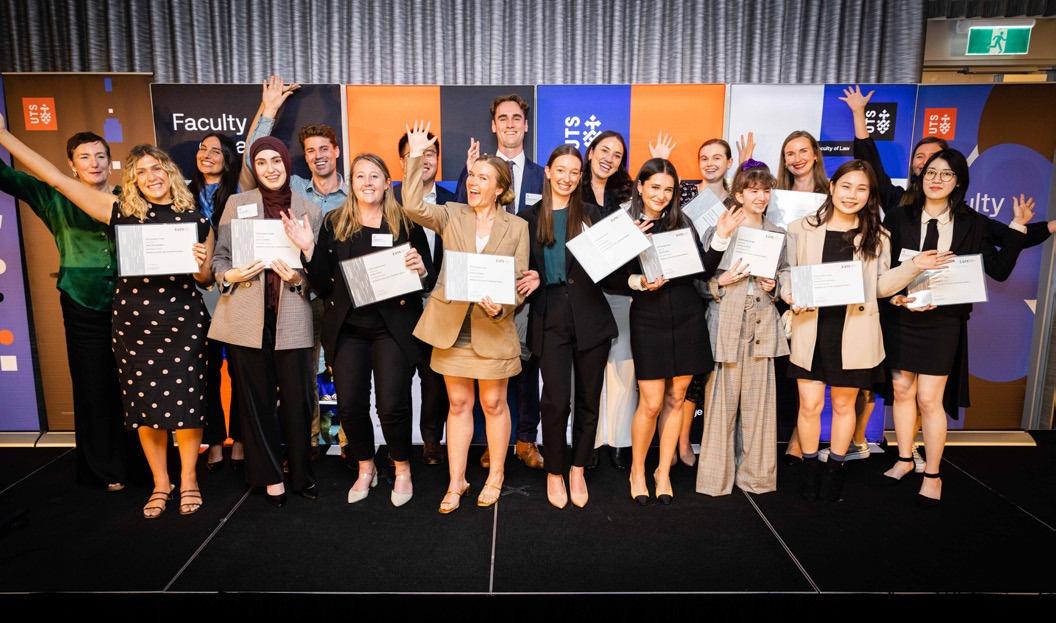


Students who earn 100 ROJ points and complete their LTS hours qualify for the prestigious Brennan Justice and Leadership Award This achievement is noted on their Australian Higher Education Graduation (AHEG) statement and celebrated at the Law Awards Night. The award is highly respected in the legal profession and beyond.
The Brennan Justice and Leadership Program (the Brennan Program) was introduced in 2011 as a joint initiative of the UTS Faculty of Law and the UTS Law Students’ Society. It is named after the late Hon Sir Gerard Brennan AC KBE GBS QC, former Chief Justice of the High Court of Australia and UTS Chancellor. His life and career exemplified the qualities of professional leadership, service and excellence that the program seeks to nurture in future legal professionals





Whether you’re in your first week of law school or prepping for finals, knowing how to write a clear and effective case summary is one of the most essential skills you’ll develop in law school. This article breaks down each element of a case summary, explains why summaries are useful, and offers tips and tools to help you write your own and provides an example summary of the famous case Donoghue v Stevenson.
A case summary is a concise, structured outline of a legal case. Students use them to: caseWhatsummary? is a
• Understand how the court reasoned through an issue
• Identify the legal principles (ratios) and obiter (judicial commentary) that came from the case
• See how the case fits into a broader legal topic
• Quickly review material for exams or during class prep
• Distinguish between binding legal rules and persuasive opinions
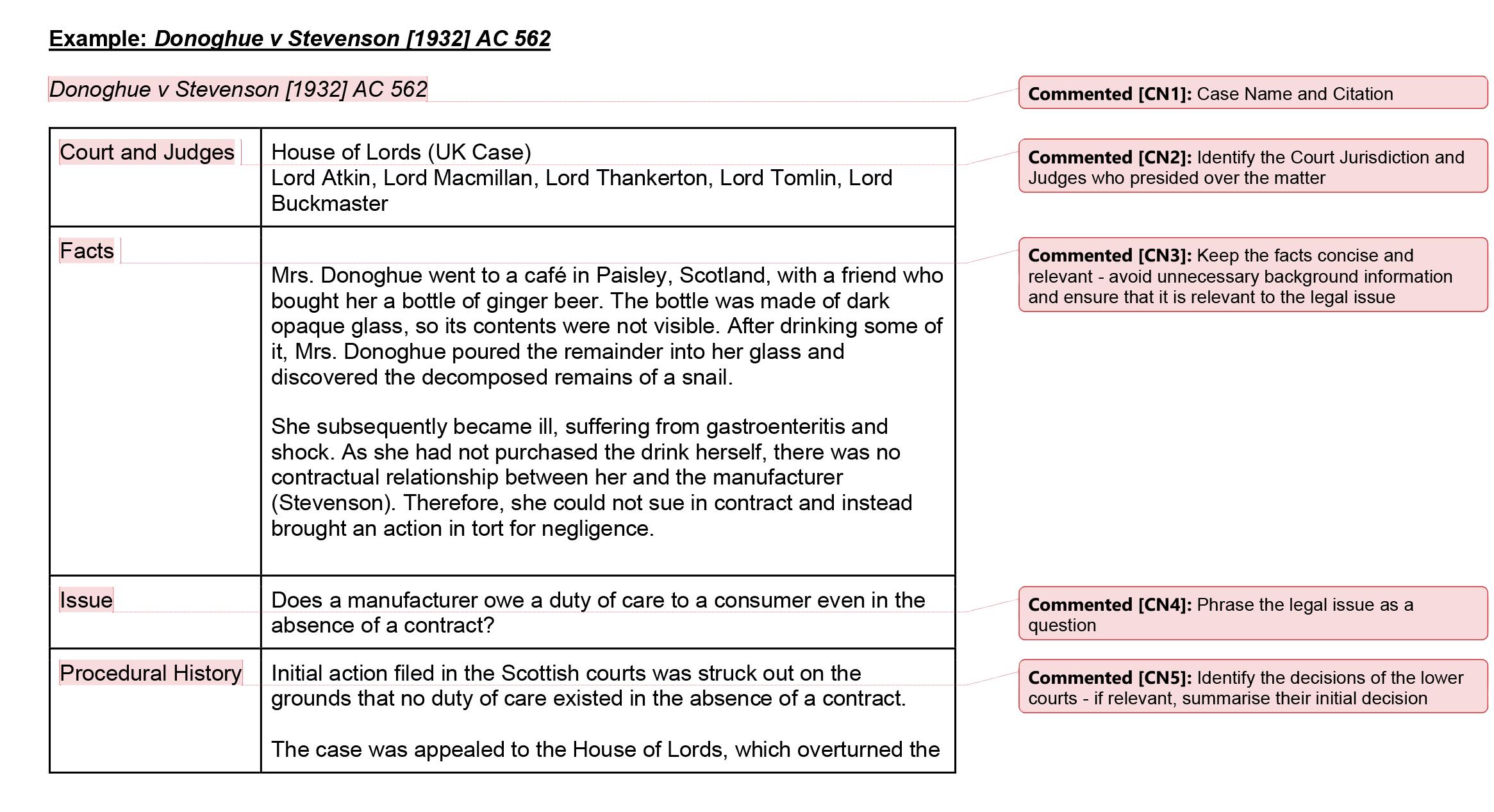
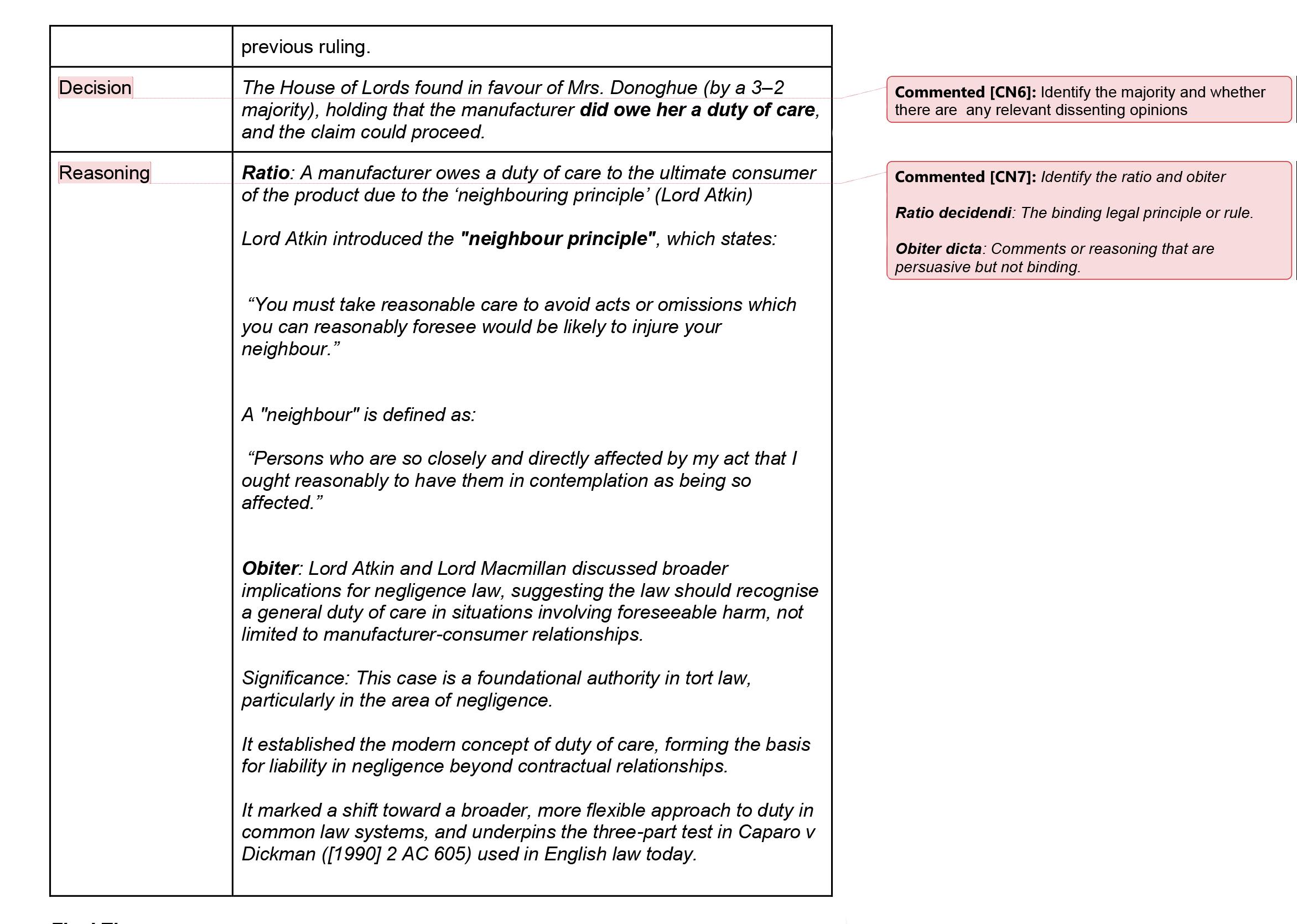
Keep it short: Aim for 1 page max per case.


Use colour coding or bullet points if that helps you learn better.

Update over time:
Cases become clearer as you study more.
Write in your own words:
Helps you understand, not just memorize.


Practice, practice, practice:
Like briefing and legal writing, summarising gets easier the more you do it
Flow charts are a great method for visual learners to use for exam preparation. They map out complex legal concepts and provide a simple and concise method of visualisation.
By actively constructing your own flow charts with both text and graphic elements and remembering how to follow the arrows within their charts, you will be able to have greater recall and retention of the law and its relevant elements.
are 5 key steps to building a great flow

STEP 1
Decide what legal issue the flowchart will represent. For example, if you are creating a flow chart on the topic of Criminal Law and Procedure, you may pick murder/manslaughter as your topic of focus for the flow chart.
List out the legal topic into its core components and procedural stages. In each component, identify and/or define the specific legislation or common law used. For example, in murder/manslaughter, you can map out the actus reus, mens rea, temporal coincidence and defences.
STEP 3 STEP 4
Symbols and Format
Start mapping out your flow chart using keys and boxes.
Keys can include shapes such as rectangles indicating a step or action, diamonds indicating decision points and have arrows which assist in showing the direction of the flow. Keys can also be in the form of colours.
There are various flowchart making tools online such as Lucidchart, or you may stick to the more traditional online tools such as Word or Canva. You may even hand draw your flowchart if preferred.
Review
Check and review that all your information is correct and reflects the relevant statutes and case law.
STEP 5
Test
Test the flow chart by doing a practice question to ensure the flowchart makes sense to you logically and assists in the accuracy and speed at which you are able answer the problem question concisely.
If it isn’t at your desired outcome, make improvements as needed to enhance clarity and accuracy
Below is an example of a flow chart created using the topic of murder/manslaughter in Criminal Law & Procedure. Please note the below flowchart is not a complete flow chart of murder/manslaughter but rather an example of how a flowchart could be formatted.
Below is an example of a flow chart created using the topic of murder/manslaughter in Criminal Law & Procedure. Please note the below flowchart is not a complete flow chart of murder/manslaughter but rather an example of how a flowchart could be formatted.
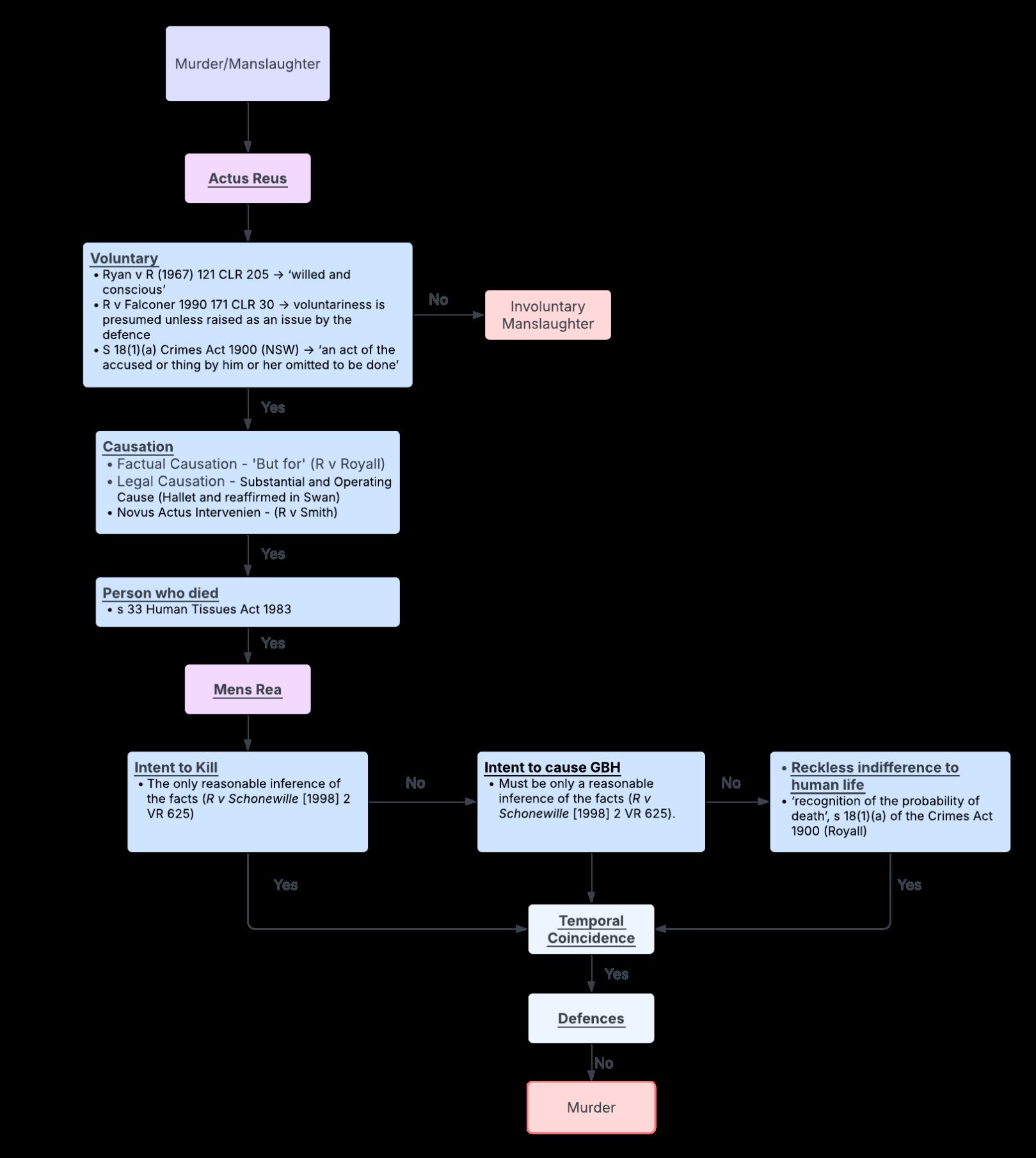


When starting to answer a question based on a set of hypothetical facts, it is crucial for students to be able to identify the issue at hand. For example, a set of facts may require you to consider whether the defendant is liable for murder. Murder has multiple elements which need to be met for the defendant to be liable such as actus reus (physical aspect of murder) and mens rea (mental [intention] aspect of murder). Within these elements, sub-elements may be present which need to be further satisfied. Hence, IRAC, when used correctly, is an invaluable tool at the law student’s disposal which allows them to provide concise and highquality responses to hypothetical scenarios, especially involving complex principles of law.
The issue is the simplest section of an IRAC response. It requires the student to identify what question they need to answer. However, the sentence identifying the issue should never be in the format of a question. Identifying the issue should also not require more than 2 sentences! For example, as part of the actus reus required for Manslaughter by Criminal Negligence, the defendant must have breached their duty of care. An example of an ‘issue sentence’ is displayed below:
Eg. The issue is whether the defendant ‘D’ breached their duty of care.
1 R v Lavender (2005) 222 CLR 67 (‘Lavender’).
2 Nydam v The Queen (VIC) [1977] VR 430 (‘Nydam’).
3 Ibid.


Identifying the rules is one of the most important sections of an IRAC response. Students must identify the principles of law they will apply to their hypothetical scenario. These principles can only be derived from case law and not secondary sources such as articles, books, websites etc. The statement of principles must be concise. Proper AGLC 4 legal citations must be used to cite the principles as well. Using the same example of establishing Manslaughter by Criminal Negligence, the following sentences describe the principles to be applied to answer the question of whether D breached their duty of care:
Eg. For the prosecution to prove this element, D must have breached their duty, exhibiting a great degree of negligence. The prosecution must also establish that upon the negligent act, there has been a gross departure from the standard of care of a reasonable person, associated with a high risk of death or GBH to the continuing act, amounting to criminal negligence.2 These are objective tests.3
Applying the law to the facts is the most important section of an IRAC response. This section would be the longest in your IRAC response. The simplest way to apply the law is to work through each principle of law stated earlier as part of your ‘rules’ and determine how your facts align with them. In this section, high-scoring responses often find use similarities and/or differences between the facts and decisions of other cases to argue a standpoint (see below). For example, using the continuing example of Manslaughter by Criminal Negligence:
Eg. D omitted to act upon hearing a splash when D was aware that V had fallen into a large fishpond. A reasonable person in the position of D would have checked to see whether V is injured, in danger of drowning or would have called and ensured emergency services arrived, aware of V’s intoxication. However, D did not do any of such things similar to R v Taber and hence, D’s omission demonstrates a great degree of negligence. Likewise, a reasonable person would have recognised that mixing a likely overdose of tablets in V’s soup, involves a high risk of death, raised in Burns v The Queen. Although V died from drowning the prosecution can prove BRD that D’s act is a gross departure from the reasonable standard of care, resulting in a breach of duty.
Note: the facts of Taber are distinguished and the similar facts between Burns and the hypothetical is used to argue that D departed from the reasonable standard of care by mixing an overdose of tablets in the victim’s food.
Another example of a complete IRAC response used to discuss one element of Manslaughter by UDA is displayed below.
The issue is whether D acted as a reasonable person, having knowledge of the unlawful act. The prosecution also has to prove that a reasonable person with the knowledge and awareness of the accused would realise that the unlawful act exposes others to an appreciable risk of serious injury. This is an objective test that considers whether the unlawful act was essentially dangerous.
This section of an IRAC response is once again simple. Once the issue has been identified, the relevant principles of law have been stated and have been applied to your unique set of facts, all that’s left is to finally conclude. This involves providing an answer to your issue. This section should not exceed 2 sentences.
Eg. Consequently, this element can be established and the jury is highly likely to find criminal negligence.
For each sub-element or element you discuss as part of your legal analysis, you will need to employ IRAC.
1 R v Taber (NSW) (2002) 56 NSWLR 443 (‘Taber’).
2 Burns v The Queen (2012) 246 CLR 334 (‘Burns’).
R v Holzer redefines serious injury as ‘really serious injury’. The handful of pills were likely an overdose (omitted) and any reasonable person could comprehend that supplying an overdose of drugs is a dangerous act that could expose them to a risk of really serious internal injury or possibly death, as raised in Burns where the consumption of an overdose of drugs is classified as a risk of serious injury. This element is for the trier of fact to decide however, it is most likely that the jury would be satisfied of this element.


During the course of a law degree, students are assessed through a range of methods designed to evaluate different aspects of legal knowledge and professional skills. Some assessments will measure doctrinal understanding and recall, while others will focus on analytical reasoning, communication, and consistent engagement.
During the course of a law degree, students are assessed through a range of methods designed to evaluate different aspects of legal knowledge and professional skills. Some assessments will measure doctrinal understanding and recall, while others will focus on analytical reasoning, communication, and consistent engagement. Having a clear understanding of the purpose of each assessment, along with effective preparation strategies, is essential for consistently achieving strong results.
Having a clear understanding of the purpose of each assessment, along with effective preparation strategies, is essential for consistently achieving strong results.

ASSESSMENT TYPE PURPOSE
Short Answers
Problem Solving
Essay Style
Multiple Choice
Class Participation
Quizzes
Presentations
Concise recall and application
Application of law to factual scenarios
Extended argument and critique
Recall of definitions and fine detail
Ongoing engagement in class
Knowledge checks
Oral communication and persuasion
Clarity, precision, IRAC in condensed form
Issue spotting, legal authority, IRAC
Structure, analysis, critical engagement
Accuracy, logical elimination
Preparation of readings and lectures, communication
Consistency, recall, use of resources
Structure, advocacy, delivery
PROBLEM SOLVING RESPONSES
ESSAY STYLE RESPONSES
Short answer questions test the ability to recall and apply legal rules succinctly They are commonly used during tutorial exercises and final examinations. Responses should be concise, targeted, and structured. Begin by directly addressing the question, then plan your response using a condensed IRAC format.
Short answer questions test the ability to recall and apply legal rules succinctly. They are commonly used during tutorial exercises and final examinations. Responses should be concise, targeted, and structured. Begin by directly addressing the question, then plan your response using a condensed IRAC format.
Problem questions assess the ability to analyse a factual scenario, identify relevant legal issues, then apply the law systematically. Structure such responses with subheadings and apply principles directly to the facts. Additionally, use IRAC or RAIC for each issue, supported by precise authority.
Problem questions assess the ability to analyse a factual scenario, identify relevant legal issues, then apply the law systematically. Structure such responses with subheadings and apply principles directly to the facts. Additionally, use IRAC or RAIC for each issue, supported by precise authority.
Essays require students to critically engage with an essay question, construct and defend a thesis, and then support it with analysis from relevant authorities. State a clear thesis, provide a roadmap, and structure arguments using PEEL (Point, Evidence, Explanation, Link).

Essays require students to critically engage with an essay question, construct and defend a thesis, and then support it with analysis from relevant authorities. State a clear thesis, provide a roadmap, and structure arguments using PEEL (Point, Evidence, Explanation, Link).

MCQs test detailed doctrinal knowledge and the ability to distinguish subtle differences, so it is crucial to read carefully, eliminate incorrect options, and test each against the relevant principle.
Quizzes reinforce learning and encourage regular study. Hence, quizzes should serve as practice exams that you can revise weekly and prepare concise notes for open-book formats.
Participation marks are one of the easiest marks to gain; they also reflect preparation and consistent engagement in tutorials. Prepare two to three points before class, aim for one meaningful contribution, and engage respectfully. Additionally, even asking clarifying questions will demonstrate engagement with the class’s content.
Presentations assess oral communication, organisation, and persuasive ability. Public speaking may not be for everyone but it can be improved through practicing delivery, maintaining a stable tone, and preparing for questions.
Across all assessment types, certain principles remain consistent: planning responses before writing, practicing under exam-like conditions, understanding the relevant legal authority, and maintaining consistency throughout the semester. Finally, it is recommended always to seek guidance from lecturers and tutors when requirements are unclear.
UTS Library: The Library provides on-campus and online workshops, subject guides, and one-on-one research support, referencing (ALGC4), and academic writing.


HELPS offers academic literacy support to undergraduate and postgraduate coursework students. Services include assignment consultations, workshops, and programs designed to foster independent learning, enhance presentation skills, and boost confidence.





Too often students rely on pre-conceived ideas of what they think the marker is looking for, rather than understanding the criteria as they are intended. This article seeks to bust some of the popular law school myths to decode feedback and provide guidance on how to attain your desired mark before submitting an assignment




Many law students assume that AGLC4 referencing can be left until the end of an assignment and completed quickly before submission.
I must admit, I have spent more than a few late nights frantically finishing my referencing just hours before the deadline!

‘IfIuse‘fancy’ words,mywork soundsmore academic’
I am sure I am not the only one to shyly confess that when I receive an assignment back, my eyes usually dart straight to the mark, leaving the feedback as a mere afterthought. This is because feedback - and the marking criteria behind it - can feel cryptic and vague. Comments such as “good legal arguments” or “correct use of AGLC4” sound straightforward, but without further explanation they offer little guidance on how to achieve them.
‘AGLC4 doesn’t take long, it can be done quickly before I submit’
However, a careful analysis of referencing criteria reveals requirements such as ‘conforms flawlessly with the style guide’ and ‘student uses consistently correct referencing’. What these criteria mean is that AGLC4 referencing must be free from any error, right down to the smallest details such as italics, full stops, commas, and brackets.

I know what you are probably thinking - who is going to notice a small full stop being out of place? Well, your markers do! And these small details are what separate the top students from the rest of the cohort. The best approach is to use the AGLC4 guide to record each source as you go, rather than trying to write multiple references at the end of an assignment when you are exhausted and more likely to make mistakes.
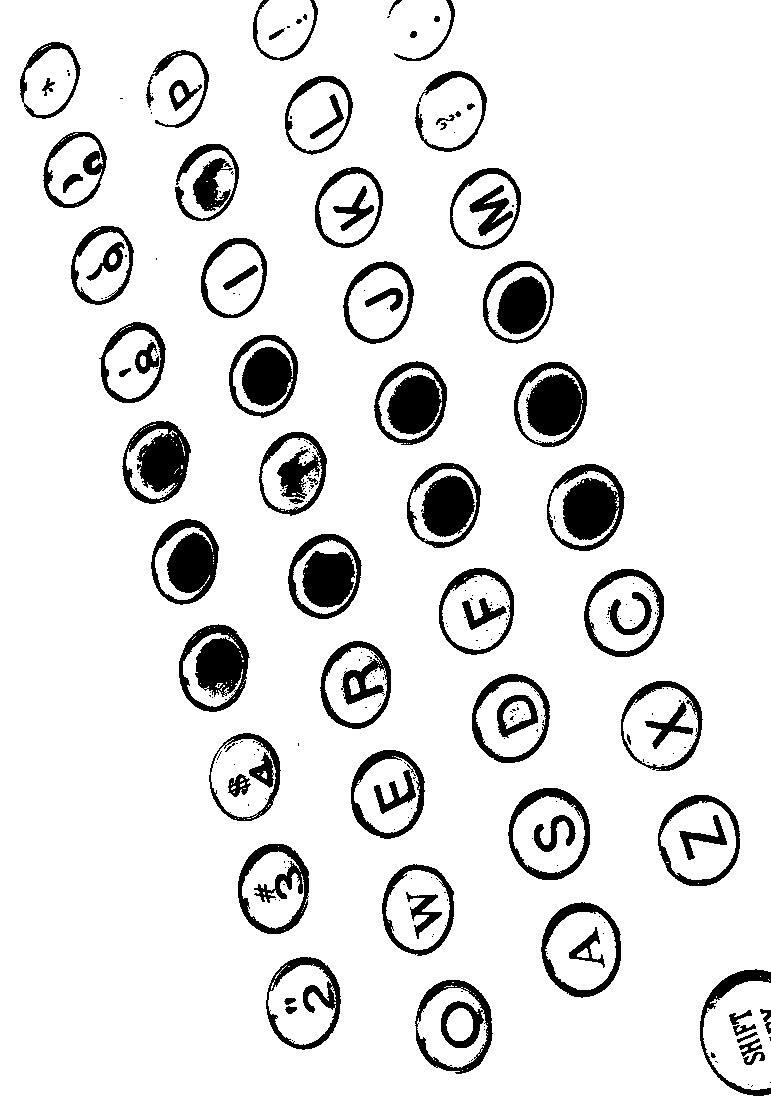




One of the hardest habits for law students to break is overusing big academic words - falling into the trap of thinking complex language makes their work sound ‘more intelligent’. However, many students overlook the fact that marking criteria is often explicitly asking for simplicity - for example, ‘essay is written in plain, direct language’. In practice this means cutting unnecessary descriptive words and focusing on key facts such as parties, legislation and case names. Complex words and sentences can distract from your key argument and waste valuable space in limited word counts.

Although each legal assignment is different, answering legal questions is not the same as writing a standard essay.
‘Legal responses are like essays’

The simple way to approach legal writing is like a checklisteach element of the problem must be addressed in order as you proceed through your response. Marking criteria such as ‘reaches a logical, succinct conclusion’ are best met by this stepby-step ‘checklist’ method which guides the marker clearly through your response. Notably, many students think extra information earns higher marks, however, information outside the structured elements is usually unnecessary and can weaken your response. Simple structures like IRAC or ILAC (Issue, Rule/Law, Application, Conclusion) help ensure you meet each criterion without overcomplicating your answer.




That said, always check what the assignment requires— while tort and criminal law typically follow problemsolving structures, subjects like constitutional law or civil practice may call for a more essay-like approach.

‘I must stick rigidly to my argument and ignore alternatives’



This myth is not entirely false - whilst it is important to have a range of sources, markers are mainly concerned with the quality of your research. Markers are looking for a range of scholarly, peer-reviewed academia that is relevant to your research. For example, ten sources from NSW legislative websites, Austlii, academic journals and cases are going to obtain you a higher mark than twenty sources from law firm blogs and Wikipedia.
‘Having more sources will get me a better mark for legal research’

This myth is not completely wrong, but also misses a key aspect that markers look for - depth of understanding. In legal reasoning, marking criteria often call for ‘a sustained argument’ or ‘logical and supported conclusions,’ meaning your answer should follow a clear, consistent line of reasoning without jumping between many different points.

What often sets top students apart is their depth of knowledge— the ability to consider alternative perspectives while still clearly emphasising the ‘most correct’ answer. For example, in a criminal law assignment, considering an alternative sentence demonstrates to the marker that you have a deep understanding of the content, while still showing awareness of the ‘most correct’ outcome. Importantly, allocate most of your word count to the ‘most correct’ answer, using only a few sentences to acknowledge alternatives without compromising the depth of your main analysis.

I hope this myth-busting article has clarified some common misconceptions that can hinder understanding of law school marking criteria. Addressing these myths is an important step toward grasping the standards required to achieve your desired mark and approaching assignments with confidence and clarity.

We all know that starting a research-based assignment can be daunting – collating cases, legislation, secondary sources and beyond can be a tricky task to start from scratch This article will focus on a few starting points for researching cases, legislation and journal articles, how to navigate various databases and filter down results, and other tips and tricks to ensure your research process is efficient and effective Let’s get started!
Starting Points
e Law, Legislation and Secondary minary
We all know that starting a research-based assignment can be daunting – collating cases, legislation, secondary sources and beyond can be a tricky task to start from

We all know that starting a research-based assignment can be daunting – collating cases, legislation, secondary sources and beyond can be a tricky task to start from scratch This article will focus on a few starting points for researching cases, legislation and journal articles, how to navigate various databases and filter down results, and other tips and tricks to ensure your research process is efficient and effective Let’s get started!
arch-based assignment can be daunting – collating cases, legislation, an be a tricky task to start from scratch This article will focus on a few ses, legislation and journal articles, how to navigate various databases ps e h is the
get started!
We all know that starting a research-based assignme secondary sources and beyond can be a tricky task to starting points for researching cases, legislation and jo and filter down results, and other tips and tricks to ensure Let’s get started!
The best place to start for research is the UTS Library website This website has two key links that will help your search: Case Law and Secondary Sources
We all know that starting a research-based assignment can be daunting – collating cases, legislation, secondary sources and beyond can be a tricky task to start from scratch. This article will focus on a few starting points for researching cases, legislation and journal articles, how to navigate various databases and filter down results, and other tips and tricks to ensure your research process is efficient and effective.
Starting Points
We all know that starting a research-based assignment can be daunting – collating cases, legislation, secondary sources and beyond can be a tricky task to start from scratch This article will focus on a few starting points for researching cases, legislation and journal articles, how to navigate various databases f ps a ive
Starting Points ary


The best place to start for research is the UTS Library website. This website has two key links that will help your search:

ages




The best place to start for research is the UTS Library website This website has two key links that will help your search: Case Law and Secondary Sources
Scrolling to the bottom of these pages will lead you links to key databases like LexisNexis, Westlaw, AustLii and more We will go through some of these in more detail below
LexisNexis, Westlaw and AustLii

Scrolling to the bottom of these pages will lead you links to key databases like LexisNexis, Westlaw, AustLii and more. We will go through some of these in more detail below.

olli g dat and more W w
and more g g

LexisNexis, Westlaw and AustLii
good for: case law, legislation, and journal articles

LexisNexis, Westlaw and AustLii good for: case law, legislation, and jou
good for: case law, legislation, and journ
The best way to navigate these databases will be through the “Advanced Search” option, which can be found on each site as pictured.
The best way to navigate these databases will be through the “Advanced Search” option, which can be found on each site as pictured.
GOOD FOR: CASE LAW, LEGISLATION,

The best way to navigate these


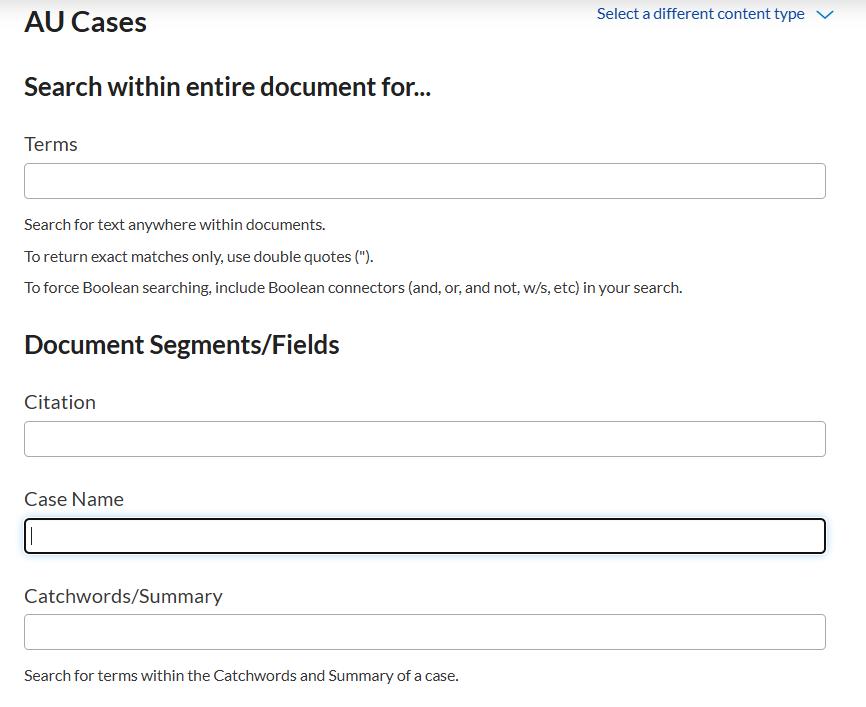


Scrolling to the bottom of these pages will lead you links to key databases like LexisNexis Westlaw AustLii and more We will go throug LexisNexis, Westlaw and Au
be found on each site as pictured.





The best way to navigate these databases will be through the u ), , ions





TIP: Using Boolean measures in the Advanced Search option, such as “double quotation marks” is another good way to filter your search for key words or longer

Library we es nks deta al articles


Opening the Advanced Search tool will display something like the picture on the left



Opening the Advanced Search tool will display something like the
These tools will allow you to filter by jurisdiction (e g , NSW or Commonwealth), date, citations etc., and search for specific terms.
These tools will allow you to filter by jurisdiction (e.g., NSW or Commonwealth), date, citations etc., and search for specific terms.
Using

TIP: Using Boolean measure “ ble quotation mar y words or longer be able to filter y – whether this is Legislation Sites



TIP: Using Boolean measures in the Advanced Search option, such as “double quotation marks” is another good way to filter your search for key words or longer phrases.
Opening the Advanced Search tool will display re on the left
You will also be able to filter your search for the type of resource you are after – whether this is case law, legislation, or secondary sources.
You will also be able to filter your search for the type of resource you are after – whether this is case law, legislation, or secondary sources.
These tools will allow you to filter by jurisdiction (e g , NSW or Commonwealth), date, citations etc , and search for specific terms

TIP: Using Boolean measures in the Advanced Search option, such as “double quotation marks” is another good way to filter your search for key words or longer phrases
Government Legislation Sites
TIP: Using Boo such as “double search for key w You will also be you are after –sources. Government Le
You will also be able to filter your search for the type of resource you are after – whether this is case law, legislation, or secondary sources
good for: jurisdiction-specific legislation
good for: jurisdiction-specific legislation
Looking for statutes? Some other handy places to look (apart from LexisNexis, Westlaw and AustLii) are the NSW Legislation and Federal Register of Legislation websites


Looking for statutes? Some other handy places to look (apart from LexisNexis, Westlaw and AustLii) are the NSW Legislation and Federal Register of Legislation websites
Looking for statutes? Some other handy places to look (apart from LexisNexis, Westlaw and AustLii) are the NSW Legislation and Federal Register of Legislation websites.

TIP: Remember to access the “In force” options on these sites to ensure you are sourcing current and updated legislation
TIP: Remember to access the “In force” options on these sites to ensure you are sourcing current and updated legislation



good for: NSW cases
good for: NSW cases
good for: NSW cases



TIP: Remember to access the “In force” options on these sites to ensure you are sourcing current and updated

As the name suggests, this website is a go-to if you are searching for cases within NSW It also has an advanced search option to filter results
As the name suggests, this website is a go-to if you are searching for cases within NSW It also has an advanced search option to filter results
As the name suggests, this website is a go-to if you are searching for cases within NSW It also has an advanced search option to filter results
As the name suggests, this website is a go-to if you are searching for cases within NSW. It also has an advanced search option to filter results.
e suggests, this website is a go-to if you are searching for cases within NSW It also has an earch option to filter results
UTS Library
UTS Library
y : journal articles
UTS Library
good for: journal articles
good for: journal articles
The UTS Library website is also useful as a preliminary search tool for journal articles By simply typing in your search terms, you can filter by the subject “Law” and by the availability “Peer-reviewed articles” to find some relevant and accurate resources
good for: journal articles
The UTS Library website is also useful as a preliminary search tool for journal articles By simply typing in your search terms, you can filter by the subject “Law” and by the availability “Peer-reviewed articles” to find some relevant and accurate resources
Now what?
Now what?
rary website is also useful as y search tool for journal articles By g in your search terms, you can filter by t “Law” and by the availability wed articles” to find some relevant and ources.



The UTS Library website is also useful as a preliminary search tool for journal articles. By simply typing in your search terms, you can filter by the subject “Law” and by the availability “Peerreviewed articles” to find some relevant and accurate resources.
The UTS Library website is also usefu a preliminary search tool for journa y simply typing in your search terms, you can filter by the subject “Law” and by the availability “Peer-reviewed articles” to find some relevant and accurate resources
All these websites and databases are simply the starting point for your research It is now your job to thoroughly review your search results and decide which are useful versus irrelevant
All these websites and databases are simply the starting point for your research It is now your job to thoroughly review your search results and decide which are useful versus irrelevant

TIP: Citation trails (accessing the sources cited in the current case/article) can be handy to find relevant, related sources
TIP: Citation trails (accessing the sources cited in the current case/article) can be handy to find relevant, related sources
Now what?

REMEMBER � giving full credit to authors or bodies of works is paramount Plagiarism is any means So, keep track of the materials you use as you go, and make sure you are corr sources in your final work (either in-text or through footnotes) to avoid academic misconduc
TIP: Citation trails (accessing the sources cited in the current case/ article) can be handy to find relevant, related

REMEMBER � giving full credit to authors or bodies of works is paramount Plagiarism is any means So, keep track of the materials you use as you go, and make sure you are corre sources in your final work (either in-text or through footnotes) to avoid academic misconduct
Now that you have reached the end of this article, best of luck with all your research-related
All these websites and databases are simply the starting poin thoroughly review your search results and decide which are usefu
ebsites and databases are simply the starting point for your research It is eview your search results and decide which are useful versus irrelevant n trails (accessing the sources cited in the current case/article) can be handy ces.
Now that you have reached the end of this article, best of luck with all your research-related
All these websites and databases are simply the starting point for your research. It is now your job to thoroughly review your search results and decide which are useful versus irrelevant.
R � giving full credit to authors or bodies of works is paramount Plagiarism is So, keep track of the materials you use as you go, and make sure you are corr our c u ha d endeavours!

TIP: Citation trails (accessing the sources cited in the current c related sources s nd make sure you are correctly citing these avoid academic misconduct th all your research-related endeavours!

REMEMBER: Giving full credit to authors or bodies of works is paramount. Plagiarism is not tolerated by any means. So, keep track of the materials you use as you go, and make sure you are correctly citing these sources in your final work (either in-text or through footnotes) to avoid academic misconduct.
Now that you have reached the end of this article, best of luck with all your researchrelated endeavours!

Covers key aspects of the subjects of Foundations of Law, Ethics Law and Justice, Criminal Law and Procedure and Torts.
Access the LSSPeerMentoring Facebook page to find useful videos on each of the above subjects.

Higher Education Language and Presentation Support
(HELPS) provides non-credited English language and academic literacy support to UTS undergraduate and postgraduate coursework students.
HELPS offers feedback to academic assignments, focusing on wording and clarity of the argument and there are numerous academic workshops available through Career Hub.
Phone: (02) 9514 9733
Email: helps@uts.edu.au
Location: Building 1, Level 5, Room 25

Feeling stuck or overwhelmed with course content? Don’t worry, these resources can help.

See the next page for active tutors who can help you with any subject. All Subject Tutors have achieved a Distinction or above in the subject.

University Peer Assisted Study Sessions are available for many subjects, not just for law, but for your other degrees too! UPASS aims to assist students with subjects with a perceived high failure rate and are led by students who have excelled in the subject. Guidance is provided as to how to approach future problem scenarios and course content is reinforced. This is part of HELPS, so if you have any questions, contact the HELPS office using the information above.
Law offers UPASS sessions for Criminal Law and Procedure, as well as Real Property. Use Allocate+ to select a relevant time for a UPASS session.


(70311)

Contracts (70211)
(70211)
Subject
(70104)
(70109)
(70327)
(70617)
(70108)
(70517)
(70417)
Rishabh Vats
Rishabh Vats
(71116)
Hi, I’m Sophie (Wellbeing Director 2025) and I’m so glad you’ve picked up this guide!
I’m part of the UTS Law Students’ Society (LSS) and one of our most important missions is to support your wellbeing throughout your law school journey. Law school is exciting but it can also be intense. It can sometimes feel overwhelming. That’s why we’re here.
At the UTS LSS, we believe that success isn’t just about academics. It’s also about balance, connection and self-care. That’s why each semester, we run a range of initiatives designed to help you slow down, check in and take care of yourself.
Our Smile Project is a semesterly wellbeing initiative that features therapy dogs, free food, painting sessions, friendship braceletmaking and collaborations with batyr, aimed at sparking peer-led conversations around mental health. The next Smile Project is on the 16th of September and we hope to see you there!
In April, we also hosted our Wellbeing x Equity Panel, which brought together students and professionals to explore the intersection of mental health, diversity, equity and the law. It was a space for honest discussion, shared experience and community-building. It’s one of the ways we’re working to make wellbeing a central part of student life.
At the end of the day, the LSS is here not just to support your academic journey, but your personal one too. Whether you’re feeling stuck, overwhelmed or just need someone to talk to, we’ve got your back.
Consistency helps your mind and body feel safe and stable. Try to keep regular sleep hours, plan your study sessions in manageable blocks and set aside time for rest and fun.

Uni is a learning journey. Setbacks are part of the process. Treat yourself with the same compassion you’d offer a friend. 1 Build a Routine That Works for You. Move Your Body. Practice Mindfulness. Stay Connected. Be Kind to Yourself. 2 4 3 5
Exercise doesn’t have to mean the gym. You can walk to class, stretch between study sessions or play a social sport to boost your mood, focus, and resilience.
Even two minutes of slowing down can reset your day. Try deep breathing, guided meditation (apps like Smiling Mind or Insight Timer are free), or simply notice your surroundings as you walk.
Talk to friends, join clubs, and reach out to classmates. Feeling part of a community is one of the strongest protectors for mental health.
UTS Counselling Services –Free and confidential support for students. Email: student. services@uts.edu.au Phone: +61 2 9514 1177
UTS Health Service – Access to doctors and nurses on campus. Phone: +61 2 9514 1777
UTS Student Wellbeing Team – Advice and support for academic or personal challenges. Email: student.services@uts. edu.au
batyr@UTS – mental health education and events.
Emergency & Crisis Support – If you or someone you know needs urgent help: Lifeline – 13 11 14
Beyond Blue – 1300 224 636
Emergency Services – 000 WELLBEING RESOURCES

